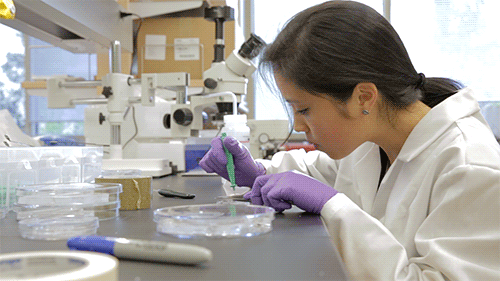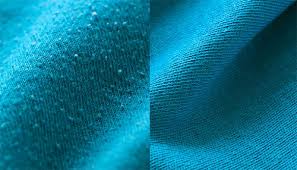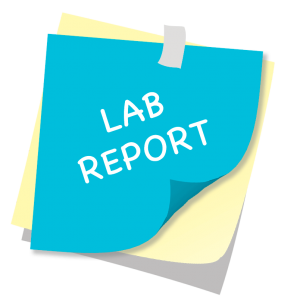Section outline
-
-
Class Schedule :
08.30-10.00
10.00-11.30
11.30-01.00
01.00-02.30
02.30-04.00
Sunday
B1 B1 Monday
Tuesday
Wednesday
Friday
Counseling Hour :Saturday : 11.00 am -01.30 pm & 03.30 pm -04.30 pm.
Monday : 09.00 am -10.30 am
Wednesday : 11.00 am -12.00 am
Thursday : 11.30 am -01.00 pm
-
-

Welcome Note
Dear Students,
Greetings! A very warm welcome to all of you.
This is Dr. Mainul Morshed and I am here to conduct your new course Textile Wet Process-I (Lab) and share and learn something new about the world of Wet Processing. So, let's gather knowledge with you all together. Feel free to approach me any kind of problem.
This course aims to provide students with an in-depth knowledge of the principles of wet processing and develop the students’ understanding & practical knowledge on the important concept about pretreatment/dyeing & printing.
Thank you very much.
Regards,
Course Teacher
Dr. Mainul Morshed
Assistant Professor
Department of Textile Engineering
Faculty of Engineering
Daffodil International UniversityCell : +8801406238336
Email : mainul.te@diu.edu.bd
Faculty Website : https://faculty.daffodilvarsity.edu.bd/profile/te/mainul.htmlGeneral Course Description :
Course Title: Textile Wet Process-I (Lab)
Course Code: TE 210
Credit Hour: 1 (Sessional, 2 contact hours per week)
Prerequisite: None
Course Level: Level 2 Term 1Course Objectives :
After the completion of this course, students will be able to-
- Dye a textile material with suitable dyes
- Know about the dyeing process & process parameter
- Do pretreat/dye/print a textile material practically
- Learn about the necessary chemicals and instruments
- Calculate recipe for the required amount of materials
- Know about the functions of the chemicals and instruments
-
Textbook
- Dyeing and Chemical Technology of Textile Fibres by E.R. Trotman
- Technology of Textile Processing, Vol.-IV,VI, by Dr. V.A. Shenai
- Textile Coloration and Finishing by W. S. Perkins
Reference Books and Materials:
- Application of Disperse Dyes by R. M. Mittal
- Chemistry of Organic Textile Chemicals by Dr. V. A. Shenai
-
Layout design of Wet Processing Lab

Assignment Objects:
- To learn how to draw a layout design
- To learn about why layout design is essential during doing lab
- To know about the location of machinery in Wet Processing lab
Assignment Outcomes:
After completing the experiment student can-
- Able to prepare the layout design
- Capable of being draw it in an innovative way
- Choose their required equipment, machinery and chemicals very fast by following the design.
-
02. Study on different chemicals, equipment and machinery that are necessary to conduct Wet Processing Lab
03. Study on recipe calculation formula

Assignment Objects:
- To learn about the name of the chemicals that are essential for Wet Lab
- To learn about the name of the equipment that are essential for Wet Lab
- To know about name of the machinery that are essential for Wet Lab
- To learn about how to utilize the instruments properly
- To learn about the recipe calculation formula also
Assignment Outcomes:
After completing the experiment student can-
- Able to know proper utilization of chemicals & instruments
- Calculate recipe by themselves
- Capable of being know about the functions of chemicals and equipment
- Capable of calculating any kind of recipe given by the instructor
-
Bio-polishing of 100% cotton knitted fabric with cellulase Enzyme

Experiment Objects:
- To learn about the biopolishing process of cotton fabric by cellulase enzyme
- To learn about the characteristics of cellulase enzyme & cotton fibre.
- To know about the recipe & also the recipe calculation
- To learn about enzymatic process of textile pre-treatment
Experiment Outcomes:
After completing the experiment student can-
- Able to know how to do an experiment i.e. biopolishing, in laboratory
- Capable of being biopolishing a textile material with cellulase enzyme
- Able to know proper utilization of chemicals & instruments
- Calculate recipe by themselves
-
05. Scouring of 100% cotton knitted fabric
06. Bleaching of 100% cotton knitted fabric
07. Scouring and bleaching of 100% cotton knitted fabric at combined stage
Experiment Objects:
- To learn about the scouring and bleaching process of cotton fabric
- To learn about the chemicals required for this experiment
- To know about the recipe & also the recipe calculation
- To learn about how to do scouring-bleaching in a single bath
Experiment Outcomes:
After completing the experiment student can-
- Able to know how to do an experiment i.e. scouring, bleaching, in laboratory
- Capable of being pretreat a textile material
- Able to know proper utilization of chemicals & instruments regarding scouring and bleaching
- Calculate recipe by themselves
- Capable of being prepare the process curve regarding the experiment
-
Dyeing of 100% cotton knitted fabric with direct dyes
Experiment Objects:
- To learn about the dyeing process of cotton fabric with direct dyes
- To learn about the characteristics of direct dyes
- To know about the recipe & also the recipe calculation
Experiment Outcomes:
After completing the experiment student can-
- Able to know how to do an experiment i.e. dyeing, in laboratory
- Capable of being dye a textile material with direct dyes
- Able to know proper utilization of chemicals & instruments regarding direct dyes
- Calculate recipe by themselves
-
Why direct dye is not suitable to dye the polymer fibers like polyester, polyamide etc.?
-
Dyeing of 100% Nylon woven fabric by acid dyes

Experiment Objects:
- To learn about the dyeing process of nylon fabric with acid dyes
- To learn about the characteristics of acid dyes
- To know about the recipe & also the recipe calculation
Experiment Outcomes:
After completing the experiment student can-
- Able to know how to do an experiment i.e. dyeing, in laboratory
- Capable of being dye a nylon material with acid dyes
- Able to know proper utilization of chemicals & instruments
- Calculate recipe by themselves
-
Dyeing of 100% cotton knitted fabric with Vat dyes
Experiment Objects:
- To learn about the dyeing process of cotton fabric with vat dyes
- To learn about the characteristics of vat dyes
- To know about the recipe & also the recipe calculation
Experiment Outcomes:
After completing the experiment student can-
- Able to know how to do an experiment i.e. dyeing, in laboratory
- Capable of being dye a textile material with vat dyes
- Able to know proper utilization of chemicals & instruments
- Calculate recipe by themselves


